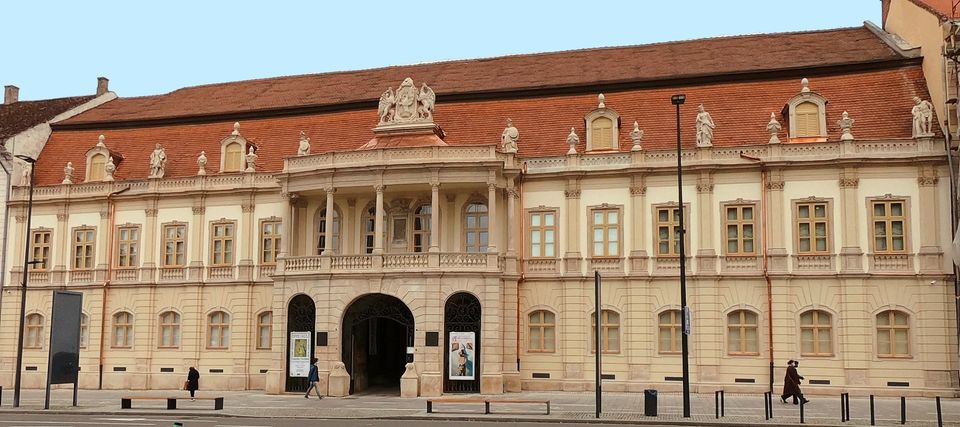
Art Museum of Cluj-Napoca
The Art Museum of Cluj-Napoca is one of the most prestigious museum institutions with an artistic profile of Romania, being nominated in 1997 for the prestigious European Museum of the Year Award – EMYA. The quality of the cultural programs organized here was rewarded with national prizes given by the Minister for Culture and National Heritage for the following expositions: Armenian culture and art in Gherla (2003), Abodi Nagy Béla (2005) and The Romanian avant-garde in collections from Cluj (2007); the museum also received a distinction given by the Romanian Committee of ICOM for the “De gustibus et coloribus…” (2010) program’s impact on audiences.
The Art Museum of Cluj-Napocais a public institution of culture, a legal entity under the subordination of the Cluj County Council, financed through own revenues and subsidies granted from the Cluj County budget. Professionally, the museum’s activity is carried out on the basis of the regulations and specific provisions issued by the Ministry of Culture and National Patrimony. It collects, preserves, researches, restores, communicates and exposes goods that are part of the Romanian and Universal visual arts category, with the purpose of knowledge, education and recreation. These include: fine and decorative art, design, architecture, photography, film, books and typography, happenings, plastic installations, performance, artistic syntheses, as well as new forms of creation circumscribed to the visual arts resulting from contemporary artistic activity.
The museum pursues its mission through the following specific activities:
a) the identification, collection by acquisitions, donations or transfers of objects or manifestations belonging to the category of Romanian and universal visual arts in order to build and enhance its own patrimony;
b) scientific research and organization of heritage records held in accordance with the legal provisions in force;
c) identification and research of objects or manifestations that are part of the category of significant visual arts in the Romanian and universal contemporary art able to become part of the patrimony of the museum (virtual patrimony);
d) storage, administration, protection, security, documentation, preservation and restoration of the artistic heritage, in accordance with the general European standards as well as the norms elaborated by the Ministry of Culture and National Patrimony;
e) valorising the cultural heritage the museum owns and the virtual heritage of Romanian and universal art through:
– organizing permanent and temporary exhibitions, in the museum or in other spaces for exhibition, in the country or abroad;
– organizing the access of the public and of specialists to the goods that constitute the museum’s heritage;
– editing scientific and advertising/promoting publications; undertaking cultural marketing activities: webpage, printed promotional material, souvenirs, publicity campaigns and other promoting methods;
– educational and cultural programs for all audiences, using own resources or in different partnerships, in order to promote understanding and appreciation of culture both in general and of fine arts, specifically;
– communicating the results of museum research by publishing articles in journals, by the participation of the curators and the researchers in seminars, congresses, scientific sessions, etc.
f) constituting and organizing of documentary funds and the general archive;
g) participating in national and international profile organizations: RNMR, ICOM, ICOMOS etc.